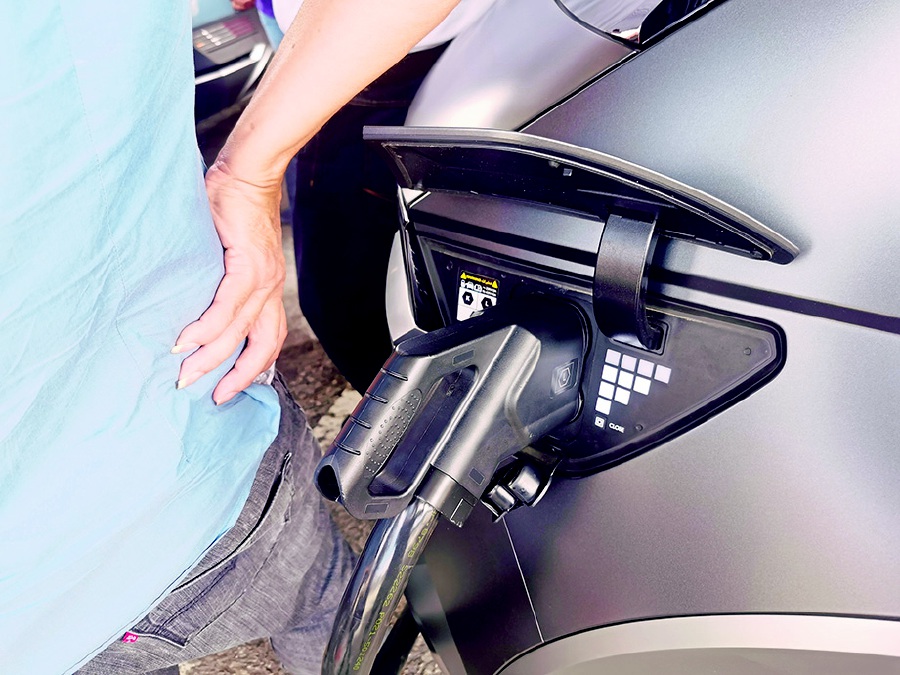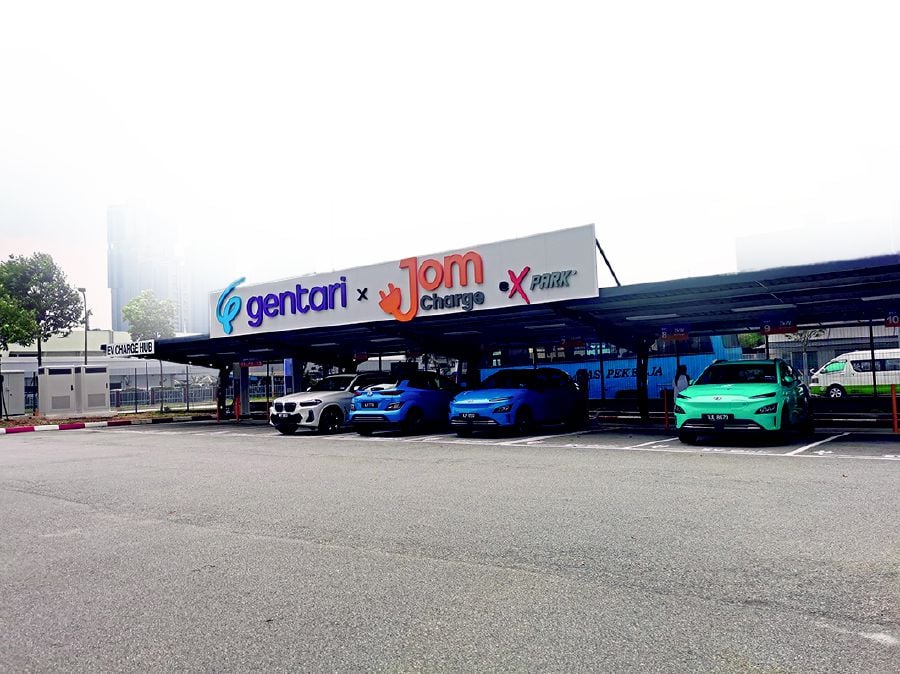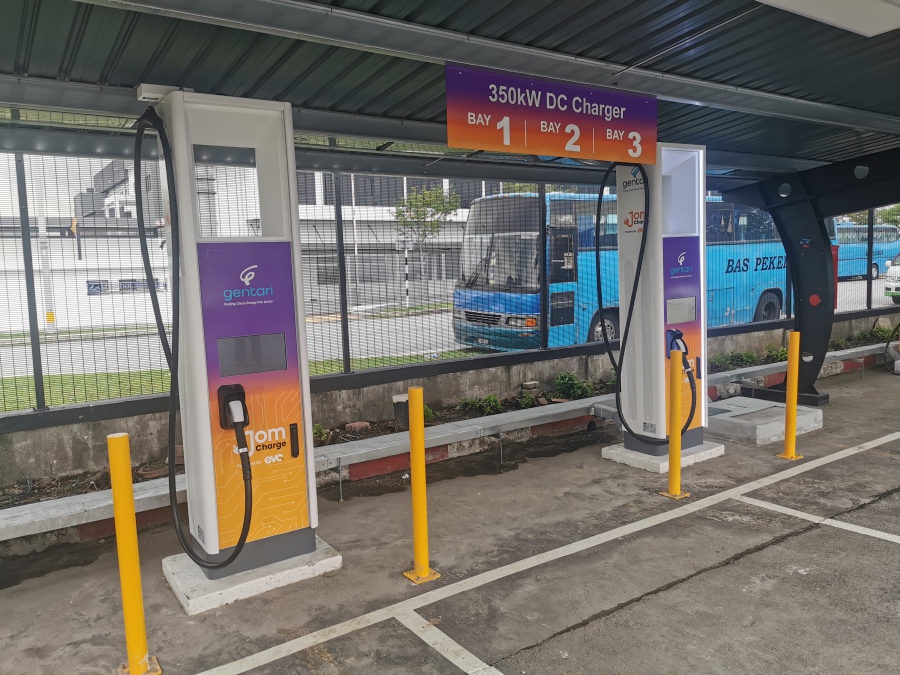KILOWATT pricing is now officially available in Malaysia after the Energy Commission opens the door allowing charge point operators (CPO) to offer this option to consumers.
Operators that want to make this alternative pricing available to their customers have to comply with regulations stipulated by the commission and they include safety standards in terms of electricity metering.
The first CPO to take advantage of this development is Gentari, a subsidiary of Petroliam Nasional Bhd.
It has opened two charging stations that offer kilowatt pricing at X-Park Sungai Way and Bangi Golf Resort.
It is also worth noting that both locations offer multiple charging nozzles with power capacity ranging from 175kW using direct current fast chargers (DCFCs) to 11kW alternative current (AC) electron pumps.
Gentari is using kilowatt pricing only on its DCFCs while continuing with time-based rates for its AC chargers.
Technically, the AC chargers are not actually chargers but simply power outlets because when the car is fed alternative current, it has to use the onboard charger to convert it to the direct current that the battery can then accept.
Previously, CPOs were forced to implement tariff that was time-based and many electric vehicle (EV) owners felt that this might not be the most equitable method of payment for their electron top-up as electric cars were not able to draw power consistently throughout the charging process.
The rate at which EVs can take on electrons depends on what is called the charging curve. Charging curves for EVs refer to the rate at which the battery charges over time.
Different EVs have different charging curves because they have different battery sizes and charging systems, and the rate at which a battery can be safely charged varies depending on the its condition and age.
In general, the charging curve for an EV will start off steep, with the battery charging at a high rate when it is near empty. As the battery becomes more full, the rate of charging will slow down until it is fully charged and the charging curve levels off.
It is not possible for an EV charging curve to be a straight line as the rate at which a battery can be safely charged decreases towards the end of the charging period.
Charging a battery too quickly can cause it to become too hot, which can damage it and reduce its lifespan.
This is why most EV owners feel it is not fair that they are being charged the same amount for every minute they are connected to the charger, especially towards the end when the charging rate drops significantly.
The availability of kW charging will introduce variations as the rates that CPOs can offer are not regulated.
Operators that wish to offer high speed or ultra-high-speed chargers will be able to price the electrons according to the level of investment needed. This is crucial as the more power a DCFC can pump, the higher the capital cost.
For example, Gentari charges RM1.60 per kWh for its 180kW chargers and RM1.20 for the DCFCs that go between 90kW and 120kW.
In the early days of implementation, the free-for-all rates may be confusing to some, who may prefer that CPOS charge a flat rate throughout. However, this is no different from petrol stations charging different prices for different quality of fuel.
In the EV charging game, it is obvious that there is no real difference in the quality of electrons that get pumped into the batteries. But time is money, as they say. We pay more for a shorter charging time.
Car owners will also have to be more aware of what rate of charge their cars can accept and plan their charging accordingly, much in the same way that they don't pay for the RON97 fuel when they are merely driving a humdrum family car.
For example, I tested a fully electric Volvo XC40 Twin Recharge recently and decided to try Shell's ultra-high speed chargers at the southbound rest area in Tapah that promise 180kW of charging. In the end, the car was only able to extract around 87kW maximum.
The car was rated for 150kW DC charging but it was unable to draw that much electricity, perhaps because the battery was not optimised before charging or that the overall condition, including ambient temperature, was not optimal for a maximum charge rate.
Shell charges RM4 per minute to take power from those big pillars and in the end, I paid RM140 for 34 minutes and seven seconds of charging, which gave me about 35kW of electrons (RM4/kWh).
If I had the option of being charged per kWh, even at the highest rate of RM1.60 charged by Gentari, that bill would have been RM56.
Before you start hurling epithets at Shell, it understandably chose those high-speed chargers because they are the most suitable for the Porsche Taycan, which operates on an 800-volt system that can charge much faster than cars that run on the 400-volt system, such as the Volvo XC40 Twin Recharge.
We do not know if Shell will apply for kWh charging, but it seems like a good bet.
By the way, Porsche wanted to create the possibility for Taycan owners to drive from Singapore to Bangkok and plans six such chargers in the country, three northbound and three southbound.
Meanwhile, there are some drawbacks to charging by the kWh, especially when the chargers are located at high traffic areas.
If car owners know that they are being charged by the kWh, they may not mind waiting longer to get to 100 per cent charge. Most 400-volt cars can charge to 80 per cent in 30 minutes or less while 800-volt cars can get there in under 20 minutes.
However, getting that last 20 per cent will double the time needed. Remember the charging curve we talked about earlier?
While kWh pricing may make certain charging stations more attractive during off-peak periods, it may cause terrible congestion during the mad festive rush that we experience several times a year in Malaysia.














